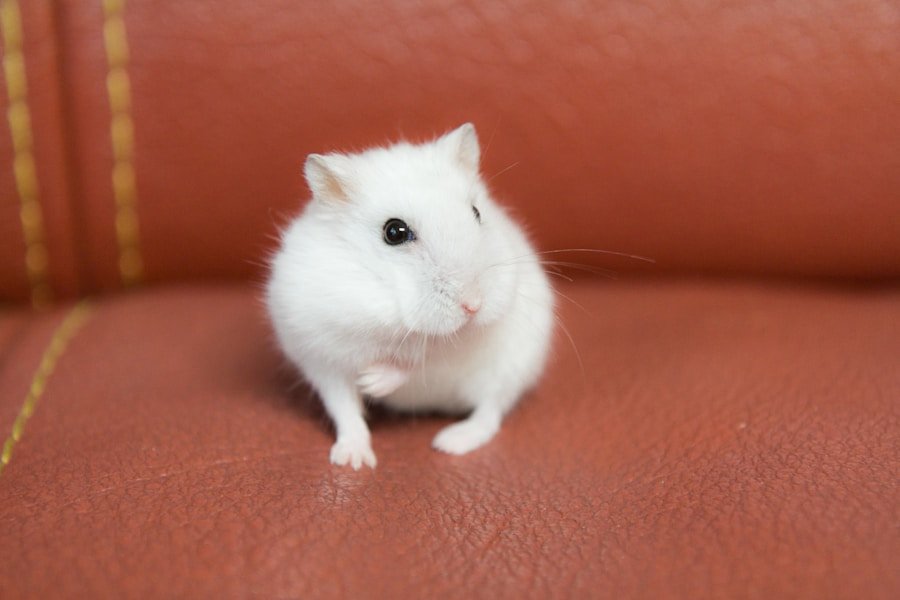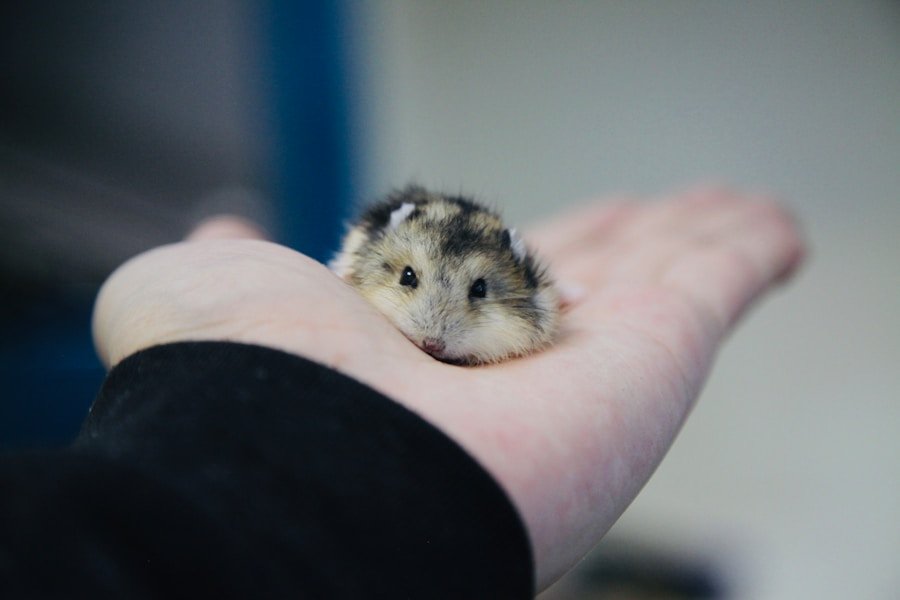Table of Contents
The Chinese hamster, a small and charming rodent, has captured the hearts of pet enthusiasts around the world. Known for their unique appearance and delightful personalities, these little creatures are often overlooked in favor of more common breeds like the Syrian or dwarf hamsters. However, the Chinese hamster has a rich history and a set of characteristics that make them a wonderful choice for both novice and experienced pet owners alike.
Chinese hamsters are particularly notable for their long, slender bodies and distinctive tails, which set them apart from other hamster breeds.
They typically weigh between 3 to 4 ounces and measure about 4 to 5 inches in length. Their fur is soft and can come in a variety of colors, including shades of gray, brown, and cream. With their inquisitive nature and playful demeanor, Chinese hamsters can be a source of endless entertainment.
As we delve deeper into their care needs and characteristics, it becomes clear why they deserve a spot in the hearts of pet lovers everywhere. About Pawwise is a website where you can find helpful information about pet care and training.
Key Takeaways
- Chinese hamsters are small, nocturnal rodents that make great pets for those with limited space and time.
- They require a spacious cage with plenty of bedding, hiding spots, and a wheel for exercise.
- A balanced diet of hamster pellets, fresh vegetables, and occasional treats is essential for their health.
- Providing toys, tunnels, and opportunities for exploration will keep Chinese hamsters mentally and physically stimulated.
- Regular veterinary check-ups, proper handling, and socialization are important for the overall well-being of Chinese hamsters.
Housing and Habitat Needs
Choosing the Right Cage
A spacious cage is crucial, as these little creatures are naturally active and require room to explore. A cage with dimensions of at least 24 inches long, 12 inches wide, and 12 inches high is recommended. Wire cages with horizontal bars are ideal, as they allow for climbing and ventilation. Additionally, ensure that the spacing between the bars is no more than half an inch to prevent escapes. A solid bottom is preferable to avoid injuries to their delicate feet.
Creating a Comfortable Environment
Inside the cage, provide plenty of bedding material such as aspen shavings or paper-based bedding to create a comfortable environment. Avoid cedar or pine shavings, as they can be harmful to your hamster’s respiratory system. Include hiding spots like tunnels or small houses where your hamster can retreat for privacy and security.
Adding Accessories for Happiness
Accessories such as chew toys, climbing structures, and a wheel for exercise will keep your Chinese hamster engaged and happy. Remember to place the cage in a quiet area away from direct sunlight and drafts to ensure a peaceful living environment.
Diet and Nutrition

A balanced diet is vital for the health of your Chinese hamster. In the wild, these hamsters are omnivorous, feeding on seeds, grains, fruits, and vegetables. To replicate this diet in captivity, provide a high-quality commercial hamster food that contains a mix of seeds, pellets, and grains specifically formulated for hamsters.
This ensures they receive all the essential nutrients they need for optimal health. In addition to their staple diet, fresh fruits and vegetables can be offered in moderation. Safe options include small pieces of carrots, broccoli, apples (without seeds), and leafy greens.
However, avoid citrus fruits as they can upset their stomachs. Fresh water should always be available in a clean water bottle or bowl. Be cautious not to overfeed your hamster; a small pinch of food daily is usually sufficient.
Monitoring their weight and adjusting their diet accordingly will help prevent obesity and related health issues.
Exercise and Enrichment
| Activity | Duration (minutes) | Frequency (times per week) |
|---|---|---|
| Walking | 30 | 5 |
| Running | 45 | 3 |
| Swimming | 60 | 2 |
| Hiking | 90 | 1 |
Chinese hamsters are naturally active creatures that require regular exercise to maintain their physical health and mental well-being. Providing opportunities for exercise is essential; a solid exercise wheel is a must-have in their habitat. Choose a wheel that is appropriately sized for your hamster—typically around 8 inches in diameter—to ensure they can run comfortably without risking injury.
In addition to the wheel, consider providing various enrichment activities to stimulate your hamster’s mind. Tunnels, climbing structures, and chew toys can keep them entertained for hours. You can also create an obstacle course using cardboard boxes or tubes to encourage exploration and play.
Regular out-of-cage time in a safe, supervised area can further enhance their physical activity levels. Just be sure to hamster-proof the space by removing any hazards or small objects they could swallow.
Health and Wellness
Maintaining the health of your Chinese hamster involves regular monitoring and preventive care. One common health concern among hamsters is obesity, which can lead to various complications such as diabetes or heart disease. To prevent this, ensure you provide a balanced diet and ample exercise opportunities.
Regularly check your hamster’s weight and adjust their food intake as necessary. Another important aspect of health care is dental hygiene. Hamsters’ teeth continuously grow throughout their lives, so providing chew toys made from safe materials will help keep their teeth trimmed naturally.
Additionally, watch for signs of illness such as lethargy, changes in appetite, or unusual behavior. If you notice any concerning symptoms, consult a veterinarian experienced with small animals promptly.
Handling and Socialization

Socialization is key to developing a strong bond with your Chinese hamster. While they may be shy at first, gentle handling can help them become more comfortable with human interaction over time. Start by allowing your hamster to get used to your presence; sit quietly near their cage and talk softly to them.
Once they seem relaxed, you can begin offering treats from your hand to encourage trust. When handling your hamster, always support their body with both hands to prevent falls or injuries. Avoid grabbing them by the tail or startling them suddenly, as this can lead to stress or aggression.
With patience and consistent handling sessions, your Chinese hamster will likely become more sociable and may even enjoy being held or played with outside their cage.
Breeding and Reproduction
Breeding Chinese hamsters requires careful consideration and responsibility. If you decide to breed your hamsters, it’s essential to understand their reproductive cycle and ensure that both parents are healthy and free from genetic issues. Female Chinese hamsters can become pregnant as early as six weeks old, so it’s crucial to separate males from females if you do not intend to breed them.
Pregnancy lasts about 16 days, after which the female will give birth to a litter of typically 4-6 pups. It’s important to provide a quiet space for the mother during this time and avoid handling the pups until they are at least two weeks old. After weaning at around three weeks old, you can begin finding homes for the young hamsters or keep them if you have the resources to care for them properly.
Tips for a Happy and Healthy Chinese Hamster
In conclusion, owning a Chinese hamster can be a rewarding experience filled with joy and companionship. By providing a suitable habitat, balanced diet, regular exercise, and socialization opportunities, you can ensure that your little friend thrives in your care. Remember that each hamster has its own personality; some may be more outgoing while others may take time to warm up to you.
Regular health check-ups with a veterinarian familiar with small animals will help catch any potential issues early on. With proper attention to their needs and an understanding of their behaviors, you can create a loving environment that allows your Chinese hamster to flourish. Embrace the journey of pet ownership with patience and love; your Chinese hamster will undoubtedly bring happiness into your life!
If you are considering keeping a Chinese Hamster as a pet, you may also be interested in learning about the best bedding options for their habitat. Check out this article on cedar chips and pine shavings as bedding to ensure you are providing a safe and comfortable environment for your new furry friend.
FAQs
What is a Chinese hamster?
A Chinese hamster is a small rodent belonging to the Cricetinae subfamily. It is not actually a true hamster, but rather a separate species known as Cricetulus griseus.
What does a Chinese hamster look like?
Chinese hamsters have a slender body with a long tail, and they typically have a dark stripe running down their back. They are typically gray or brown in color, with a white belly.
What is the natural habitat of Chinese hamsters?
Chinese hamsters are native to the deserts and steppes of Mongolia and northern China. They are adapted to dry, arid environments and are known for their burrowing behavior.
What do Chinese hamsters eat?
In the wild, Chinese hamsters primarily feed on seeds, grains, and vegetation. In captivity, they are typically fed a diet of commercial hamster food, supplemented with fresh fruits and vegetables.
Are Chinese hamsters good pets?
Chinese hamsters can make good pets for individuals who are willing to provide them with proper care and attention. They are generally more active and less likely to bite than other species of hamsters.
How long do Chinese hamsters live?
On average, Chinese hamsters have a lifespan of 2-3 years when kept as pets. With proper care, some individuals may live slightly longer.


